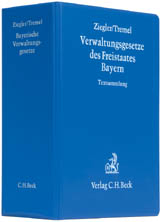
How EU Member States Represent the Common Purpose of Migration Management
Martinus Nijhoff (Verlag)
978-90-04-69572-6 (ISBN)
- Noch nicht erschienen (ca. November 2024)
- Versandkostenfrei innerhalb Deutschlands
- Auch auf Rechnung
- Verfügbarkeit in der Filiale vor Ort prüfen
- Artikel merken
Since the ‘refugee crisis’ in 2015, EU Member States have claimed to represent or act on behalf of the Union when regulating migration. Some measures were outside or at the margins of the EU legal order. How can Member States reconcile their double bind as members of the Union and as sovereign nation states? Enriching legal doctrine with constitutional theories, this book argues that EU law is still able to uphold the rule of law, in line with its foundational promise, while also empowering the Member States to govern migration in the common European interest.
Sebastian Meyer was a postdoctoral researcher at the Utrecht Centre for Regulation and Enforcement in Europe (Renforce), doing research on EU constitutional law and EU migration management. He holds a Ph.D. from the University of Basel, where he worked as an academic assistant at the Chair of European Law.
Introduction
Part 1
1 Representing the Union and the Nation State
1 Introduction
2 Representing the Nation State
2.1 Political Reflexivity in the Constitutional State
2.2 How the German Federal Constitutional Court Represents European Integration
3 Representing the Rechtsgemeinschaft: The Common Purpose of Mutual Non-interference
4 Representation, EU Law and the Empowerment of the Member States
4.1 What Makes a (Good) Representative?
4.2 What Makes Member States (Good) Representatives of the Union?
4.3 How the Formal Representation of the Union May Become Contentious
5 Conclusion
2 Acting on Behalf of the Common Purpose
1 Introduction
2 Moving between the Spheres (i): The Systemic Dimension
2.1 Radical Pluralism: Each to Their Own
2.2 Cosmopolitan Pluralism: Principles Anywhere
2.3 Epistemic Pluralism: The Elusive Common Whole
2.4 Synthesis: The Common Purpose in Constitutional Pluralism
3 The Principle of Autonomy in EU Law: Meaning and Limits
3.1 The Original Justification
3.2 Today: Upholding the Common Values and Mutual Trust
3.3 Interim Conclusion
4 Solidarity and the Common Purpose of Migration Management
4.1 The Concept of Solidarity
4.2 Solidarity in the Inner Sphere
4.3 Solidarity in the Intermediate Sphere
5 Moving between the Spheres (ii): The Instrumental Dimension
5.1 The Relationship between Law and Governance
5.2 Political Hybridity as Part of the Meta-constitutional Discourse
6 Conclusion
Part 2
3 The Common Purpose of EU Migration Management
1 Introduction
2 The Basic Tenets of International Refugee Law
3 The Dual Common Purpose: Individual Protection and Collective Security
4 Responsibility-Sharing Under a Comprehensive Approach
5 European Cooperation and Support from the EU Institutions
5 Summary
4 Acting on the Internal Dimension: Implementing EU Migration Management
1 Introduction
2 Responsibility for Individual Protection
2.1 Allocating Responsibility under the Common European Asylum System (ceas)
2.2 Responsibility and Exceptions to Mutual Trust
2.3 Responsibility in light of interdependence
3 Responsibility for Public Security
3.1 Enforcing a Return Decision on Behalf of Another Member State
3.2 Issuing an Entry Ban on Behalf of All
4 Balancing a Fine Line after the Reintroduction of Internal Border Controls
4.1 The Ruling in Arib: Countering the Temptation to Slip Away into the Outer Sphere
4.2 Pushbacks of Asylum Seekers Registered in Another Member State
4.3 Pushbacks of Third-Country Nationals Subject to an Entry Ban
5 Conclusion
5 Acting on the External Dimension: The EU-Turkey Statement
1 Introduction
2 erta and the Theory of the European Spheres
2.1 Finding an erta Effect
2.2 Rationales for Duties of Abstention, Focussing on erta Exclusivity
3 erta and the Practice of Migration Management: The EU-Turkey Statement
3.1 Background and Content
3.2 Reception at the cjeu and in Legal Scholarship
3.3 Applying the erta Doctrine to the EU-Turkey Statement
3.3.1 Whether the Statement Is an ‘International Agreement’
3.3.2 Analytical Difficulties and Normative Concerns
4 Moving Inside-Out in EU External Relations
4.1 Towards a Formal erta Test: The Useful Effect of EU Law
4.2 The Useful Effect in the Case Law on EU External Competences
5 Whether the EU-Turkey Statement Is Compatible with the Useful Effect of the Common Rules
5.1 The Useful Effect of the Safe Third Country Rule
5.2 The Union’s Independent Legal Capacity to Act Internally and Externally
5.2.1 The EU Asylum Acquis and, in Particular, the Asylum Procedures Directive
5.2.2 The Resettlement Scheme
5.2.3 The Facility for Refugees in Turkey
5.2.4 Visa Liberalisation, the Customs Union and Accession
6 Conclusion
Conclusions
1 Summary
2 The Future of Political Reflexivity
2.1 New Pact on Migration and Asylum
2.2 Towards EU Strategic Autonomy
Bibliography
Index
| Erscheint lt. Verlag | 28.11.2024 |
|---|---|
| Reihe/Serie | Nijhoff Studies in European Union Law ; 26 |
| Sprache | englisch |
| Maße | 155 x 235 mm |
| Gewicht | 1 g |
| Themenwelt | Recht / Steuern ► EU / Internationales Recht |
| Recht / Steuern ► Öffentliches Recht ► Besonderes Verwaltungsrecht | |
| Recht / Steuern ► Öffentliches Recht ► Völkerrecht | |
| ISBN-10 | 90-04-69572-9 / 9004695729 |
| ISBN-13 | 978-90-04-69572-6 / 9789004695726 |
| Zustand | Neuware |
| Haben Sie eine Frage zum Produkt? |
aus dem Bereich


